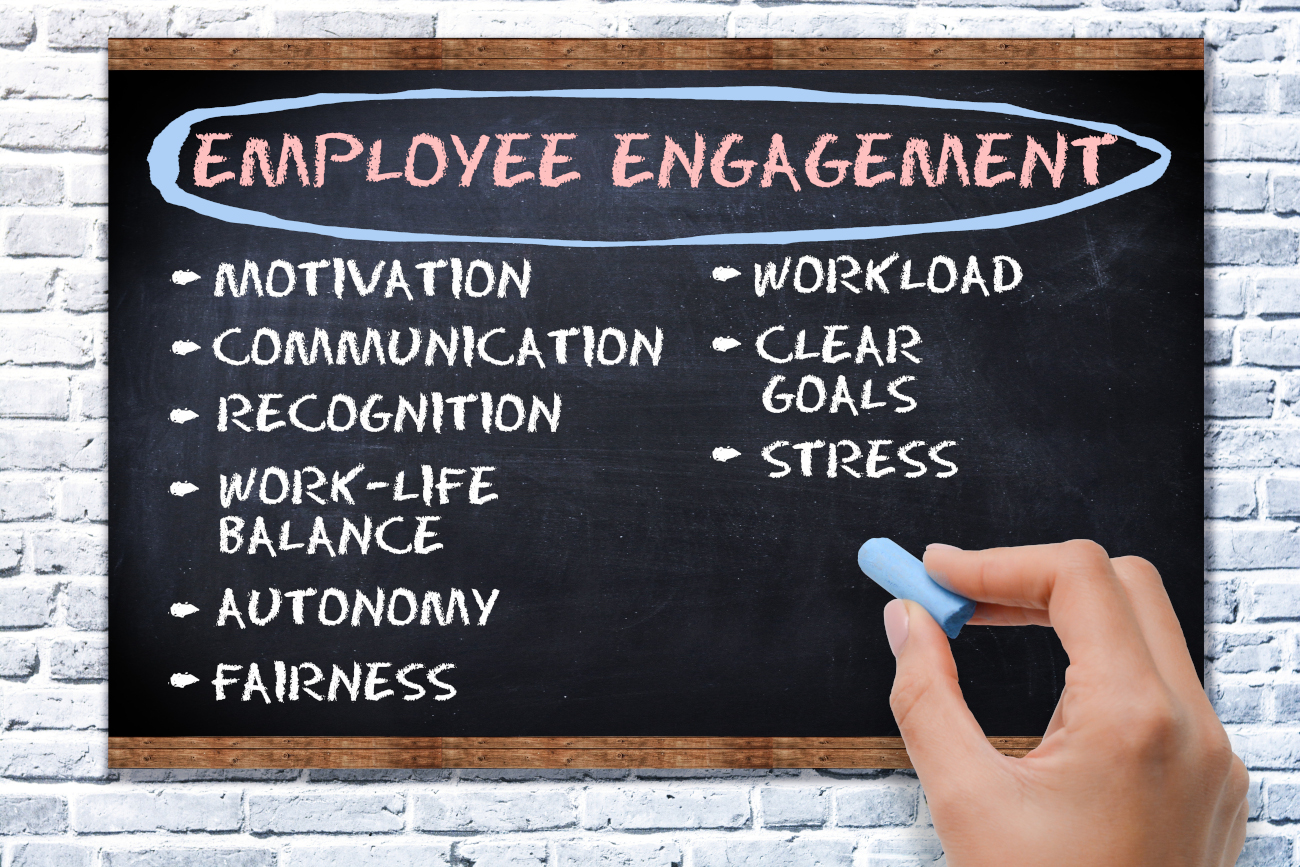Employee engagement is important for success. If you want to build a strong workforce that’s efficient and productive, then you need workers who are engaged in their jobs.
What is employee engagement? The term refers to how emotionally connected a worker feels to their job. It describes how much they care about the organization that employs them. Those who feel engaged are more likely to make decisions and do things that work toward the company’s goals rather than a promotion or a bigger paycheck.
Engaged employees will do their best, even when they aren’t being observed. They are more inclined to want to improve in their positions and take the extra step to make a better product or offer a better service. They are the key to better business outcomes.
A Gallup report found that 51% of employees are disengaged with 13% feeling actively disengaged. Those who are actively disengaged feel miserable in their jobs and spread negativity.
Another Gallup report revealed that companies with highly engaged workers were 21% more profitable. They were also 17% more productive compared to companies with disengaged employees. Companies in the United States lose between $450 and $550 billion annually due to employee disengagement.
What can you do to increase employee engagement in your organization?
Start By Making Sure Everyone Has the Right Tools
One of the first things you should do when building employee engagement is to make sure that everyone has the tools they need to do their jobs. Sometimes, barriers can appear that prevent workers from completing tasks. These may stop them entirely or slow the process, reducing their productivity. Barriers can be extremely de-motivating and frustrating.
For example, security protocols may require workers to remember several passwords to access the software needed to do their job. Juggling those passwords can become a burden. Simplifying the procedure would go a long way in reducing stress.
When they can work smoothly and efficiently, employees are more likely to have a positive outlook on their job – which is an important first step towards better employee engagement.
Assess systems and tasks for each job role and look for anything that is unnecessarily complex or difficult. Find ways to simplify these areas that allow your team to continue producing a quality product or service and remain compliant (if applicable).
Hear What Your Workers Have to Say
Workers will be far more engaged if they feel like you are listening to them. Too many businesses want employees to listen but don’t do the same in return. This can make workers feel unimportant, insignificant, and unheard.
Listening to feedback and ideas will help you learn more about the worker experience with your organization. It can help you identify areas that might need improvement. In some cases, this could help you address issues before they become expensive problems that lead to low retention rates and waning productivity.
Before an employee feels engaged, they must feel heard. They need to know that they are a valued member of your team.
Give Rewards and Recognition Loudly
Many businesses have a system for rewarding hard work and good deeds. This is great, but it may fall flat if no one knows about it.
If you don’t already, you should have a way to recognize workers who perform well or go above and beyond. When doing so, make sure everyone in your company knows about it. Make announcements, send emails, and host a celebration for those you are recognizing.
The leadership at Yum! Honors employees who do well with a parade around the office that includes horns, cowbells, kazoos, and tambourines. Dozens of employees gather to watch fellow workers are recognized.
This may be a little over the top for your company, but it works for Yum!. Find a method that matches your organization while loudly recognizing the hard work of your team. Seeing the festivities can motivate others to work towards their own rewards and recognition. It also helps create a positive environment that focuses on achievement.
Nurture Stronger Bonds Between Employees
The stronger the bond between employees is, the more engaged each person will feel in their jobs. Staying professional doesn’t mean not caring about the people you work with each day.
Companies can nurture stronger bonds by creating opportunities to get to know each other. Hosting events is a good way to get started.
Woodworkers at Timberlane constructed a bean bag toss game that employees use at company parties. Another worker fries a turkey every year to bring to the company Thanksgiving potluck.
Encourage Ongoing Learning with Accessible Training
Teams that thrive do so with ongoing learning. Organizations should nurture a desire to improve and develop new skills in their workforce. Make sure training is provided to all new employees as well as ongoing courses for those who require recertification.
You should also ensure that everyone knows where to go to continue training if they wish to do so. Managers, supervisors, and team leaders should encourage career development with learning paths and courses. Help workers get promotions or move into roles they really want by giving them the knowledge they need to get there.
An LMS makes it easy to centralize training, giving employees a portal to log into for training support or to see what classes might be beneficial to them.
Make a Connection Between Work and Purpose
The work employees do directly impacts your business. Each person participating in that process should know their role and how it supports the organization. This information helps workers make better decisions. It also increases motivation because they know how their job effects their coworkers as well as the customers the business serves.
Without this information, employees may feel like what they do is isolated and insignificant even though they contribute to keeping the company going. They should be aware of their impact and why the work they do is important.
Check in with Employees Regularly
You shouldn’t micromanage your teams, but you should check in with them regularly. A quick mid-year review isn’t enough. Regular feedback will help workers know where they stand and what they are doing well or what needs improvement.
Formal and informal check-ins work and are best performed weekly. This interaction gives workers an opportunity to discuss concerns, needs, or successes. Managers and supervisors can use this time to make sure workers are meeting deadlines, accomplishing goals, and keeping up with training requirements.
Make Physical and Mental Wellness a Priority
Employees who are physically and mentally well are going to be better equipped to work efficiently and make good decisions. Provide resources to help workers get what they need, whether it’s seeking therapy or a good night’s sleep. That also means avoiding strenuous work hours and ensuring that the workload is reasonable.
Flexible work schedules are ideal as well as encouraging a healthy work-life balance. You should also provide a psychologically safe workspace where employees know it is ok to be vulnerable and fail.
Employees should be able to do their jobs without fear of negative consequences to their status, career, or self-image. The simplest explanation is that workers should know that the things they say and do won’t be used against them, as long as they meant well.
Psychologically safe workplaces nurture employees who are more innovative, reliable, and give better performance. They also have higher retention rates, improved reputations, increased profitability, and better adherence to health and safety standards.
Employee engagement should be a key focus in your recipe for success. Visit LMS.org to read LMS reviews and learn more about how technology can help you engage your workforce.






